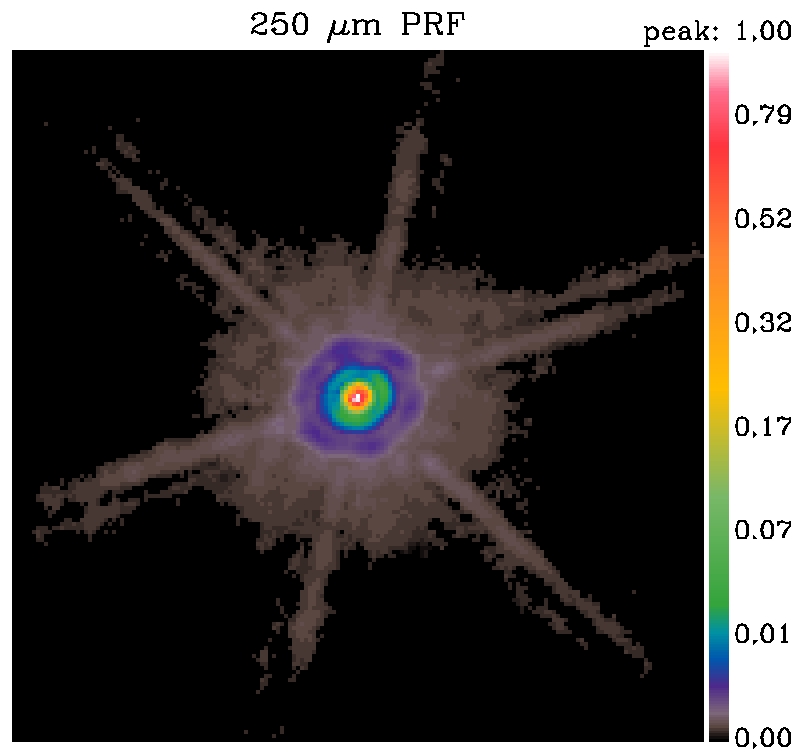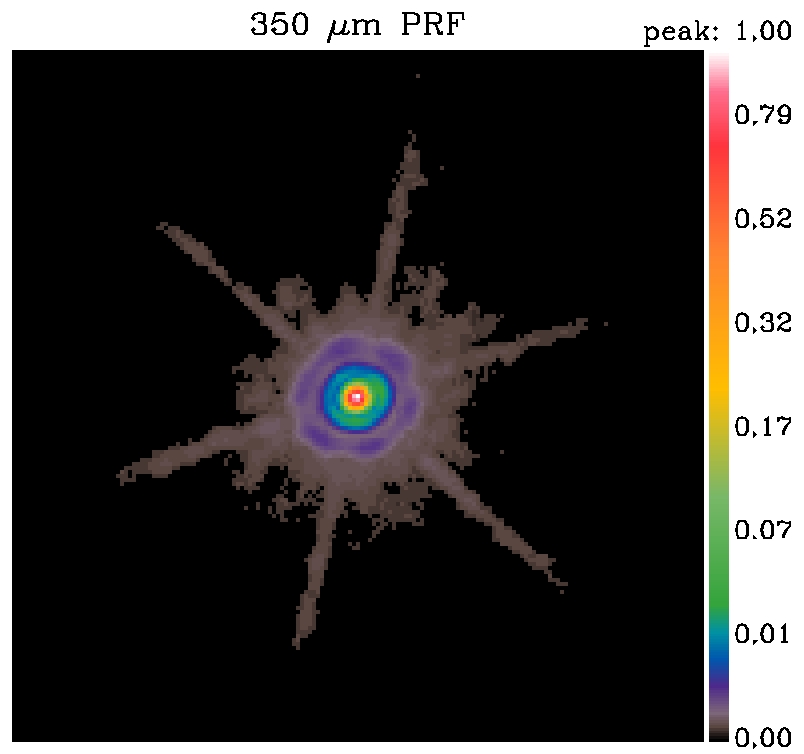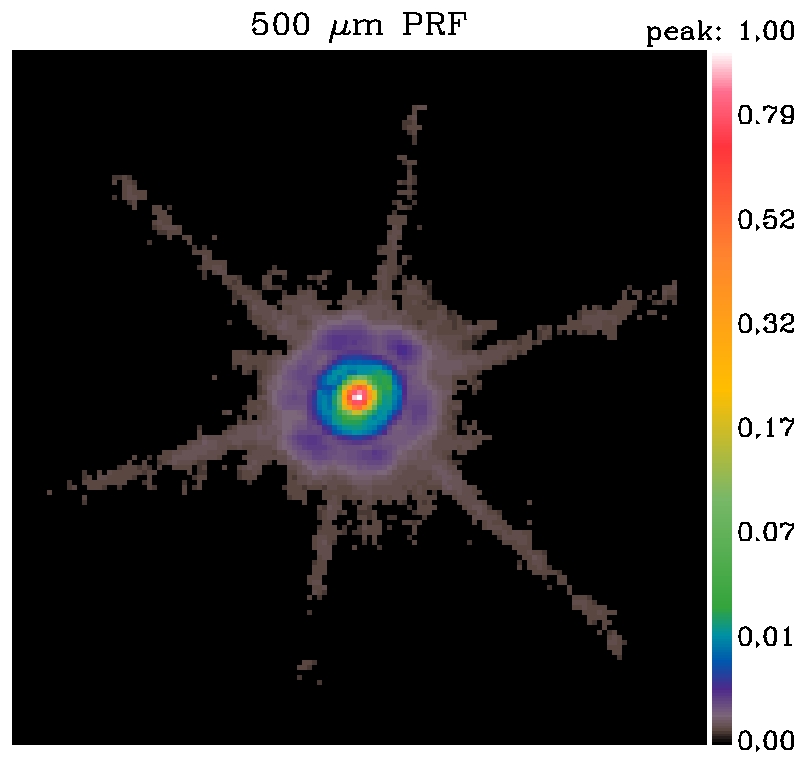New SPIRE empirical beams
The flux calibration of SPIRE is
strictly valid only for point sources, and the brightness unit of the
maps (Jy/beam) is appropriate only for point
sources. Since an accurate flux calibration for
extended sources depends on the
knowledge of the beam areas, it is crucial to derive these
with care.
The official
empirical beams were built from an observation of Neptune in
bright-source mode.
They are therefore not as deep as if they had
been derived from a nominal observation.
In particular, the secondary lobes are very
noisy and the diffraction spikes are
below the noise level
in these images.
Consequently, I have derived a new set of
empirical beams from a nominal observation of Uranus,
with normal gain settings and also twice as
many scans as the observation of Neptune (8 instead of 4).
At the time of the observation, Uranus had an
angular diameter of 3.53", slightly larger than that
of Neptune (2.26").
Images of Uranus have been made with
Scanamorphos, which uses a different projection scheme
than Hipe. This means that they should be used
in combination with Scanamorphos maps.
Their orientation, along the direction of the
first scan, is designed to match the point response
functions (PRFs) of maps whose orientation is
also constrained along the direction of the first scan.
Faint background sources have been masked or
subtracted. The result is shown below.
Here are the beam areas computed from these
images, corrected for the finite size of Uranus.
By default, beam widths are slightly larger in
maps
made with Scanamorphos, by about 1.5%.
A small correction has to be applied for beam
areas in Hipe maps.
PSW (250
microns): 468 arcsec2
PMW (350
microns): 850 arcsec2
PLW (500
microns): 1763 arcsec2
The beams are available in IDL save
format: prf_psw.xdr
prf_pmw.xdr
prf_plw.xdr
They have pixels sizes of 4.5", 6.25", and 9", respectively
(approximately one fourth of the FWHM).



H.R.
posted March 15, 2010


